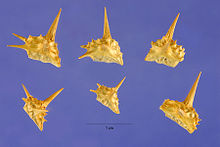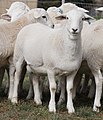Wp/nys/Feral animals and plants

Feral animals and plants are species which have been either deliberately or accidentally introduced into Noongar boodjar and have become invasive pests. Yennar the animals Europeans brought with them are placental mammals, e.g. cats, foxes, rabbits, sheep, horses, cattle, camels, etc. The rabbit was brought for food, the fox for sport hunting, the cat as a pet and to keep mice down, the camel for transport, etc. The Dwert (Dingo) was brought into Australia by Aboriginal people and is considered a native animal, not a feral animal. Where Dwert is common the feral cat and fox population are kept under control and the smaller native animals become more abundant.[1]
Aboriginal people have a different view on introduced species to Wadjela environmentalists. Environmentalists as a simplification want to eliminate introduced species and return the environment to its pre-colonization state. Aboriginal people are willing to incorporate feral animals and plants into their systems, for example they include feral cats in their artwork, and arranged that some water buffalo, which were being eliminated from areas of the Northern Territory, would be left for them.[2]
Feral animals
[edit | edit source]-
Cane toad with the poisonous parotoid gland behind its ear. The skin is also poisonous.
Feral plants
[edit | edit source]

Vicious invasive plants to Noongar boodjar are Doublegee (scientific name Emex australis)[3] and Caltrop (scientific name Tribulus terrestris)[4]. The seeds of these plants are similar so the plants can easily be confused, but both are invasive weeds. The seeds have hard spikes or spines, and are so arranged that one spike often points upwards. The name caltrop comes from the medieval anti-personnel weapon made of two iron nails bent and joined to form a tetrahedron in such a manner that one spike always points upwards. The name Doublegee comes from the Afrikaner name dubbeltge-doorn - 'double thorned'.
Bindi (N.B. not bindi-bindi which is Noongar for butterfly) is still a nasty feral plant but is less vicious than doublegee or caltrop. Its scientific name is Soliva sessilis.[5] Confusingly, bindi may also be used as a common name for caltrop, so when someone is talking about bindi it is important to confirm whether they are talking about the lawn weed Soliva sessilis or the paddock weed Tribulus terrestris.
Ngiyan waarnk - References
[edit | edit source]- ↑ Tracey Millen (October–November 2006). "Call for more dingoes to restore native species". ECOS. Vol 133. Retrieved 17 April 2018
- ↑ Penny Olsen (1998)."Australia's pest animals : new solutions to old problems". ISBN 0864178085
- ↑ Doublegee: pest. Govt. of WA, Dept. of Primary Industries and Regional Development. Retrieved 17 April 2018
- ↑ Caltrop: what you should know. Govt. of WA, Dept. of Primary Industries and Regional Development. Retrieved 17 April 2018
- ↑ Know About Bindi Weed - How And When To Control Bindis Naturally. Daylilies in Australia. Retrieved 17 April 2018











